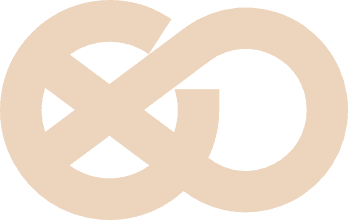As we age, maintaining physical health becomes important. One of the most effective ways to do this is through bodybuilding. Bodybuilding at age 50 and beyond offers numerous benefits, whether you’re an experienced lifter or a complete beginner. From increased muscle mass and energy to improved mental health and chronic disease management. In this blog, we will explore the essentials of bodybuilding for those over 50, including safety tips, workout routines, and dietary advice.
Is Bodybuilding Safe Over 50?
Bodybuilding can be incredibly safe and beneficial for individuals over 50. Engaging in regular weightlifting helps combat the natural decline in muscle mass that occurs with age, a condition known as sarcopenia. Building muscle not only improves physical strength but also enhances metabolic health, aids in weight management, and boosts overall energy levels. Moreover, strength training can help manage or alleviate chronic conditions such as arthritis, diabetes, back pain, and heart disease.
Expert Opinions
Personal trainer Warren Gendel, winner of the Mr. Santa Barbara 1992 NPC bodybuilding contest and owner of Well-Fit by Warren, emphasizes that age is not a barrier to getting in shape. According to Gendel, “You can get in shape at any age if you live an active lifestyle and are in good health.” Similarly, Bracha Goetz, a children’s author from Baltimore, began lifting weights at age 60 to combat osteoporosis and now feels stronger than ever.
Addressing Misconceptions
Many women are deterred from bodybuilding due to the misconception that lifting weights will make them excessively bulky. However, this is far from the truth. Griff Robinson, a NASM-certified personal trainer, explains that unless a woman is training at the level of an elite bodybuilder, weightlifting will result in a more toned and fit physique rather than a bulky one.
Benefits for Women
Women over 50 can enjoy the same physical, mental, and emotional benefits from bodybuilding as men. Strength training helps in maintaining bone density, reducing the risk of osteoporosis, improving posture, and enhancing overall quality of life.
How to Start Bodybuilding After 50
Before starting any new exercise regimen, it’s crucial to consult with your healthcare provider, especially if you have any chronic health conditions or are currently inactive. Your doctor can help determine if bodybuilding is suitable for you and may offer advice tailored to your specific health needs.
Initial Steps
Once you have the green light from your doctor, start with 2-3 weightlifting sessions per week. Each session should last no more than 30 minutes to avoid overworking your body. Begin with a brief warm-up, such as 5-10 minutes of brisk walking or another cardio activity.
Exercise Routine
Aim for 12-15 repetitions of each exercise, and consider doing 2-3 sets. Choose a weight that is challenging yet manageable, ensuring your muscles feel fatigued by the end of each set. As you become stronger, gradually increase the weight.
Safety First: Essential Tips for Bodybuilding

Avoid the temptation to dive into intense workouts immediately. Starting slow with light weights and short sessions reduces the risk of injury. Gradually increase the intensity and duration of your workouts as your strength improves.
Rest and Recovery
Incorporate rest days into your bodybuilding routine to allow your muscles to recover. “Take a day off between each training session to rest and recover,” advises Gendel. Adequate rest is crucial for muscle growth and overall health.
Proper Form and Technique
Using proper form and technique is essential to prevent injuries. If you are unsure about your form, consider working with a personal trainer who can provide guidance. Incorrect lifting techniques can lead to strains and other injuries.
Listen to Your Body
Pay attention to how your body responds to exercise. If you experience pain or discomfort, stop the activity immediately. Use lighter weights or take a break if needed. Persistent pain should be evaluated by a healthcare professional.
Complementary Workouts and Nutrition
While bodybuilding focuses on strength training, incorporating cardiovascular exercises like jogging, swimming, or cycling can improve overall fitness and heart health. Aim for at least 150 minutes of moderate-intensity cardio per week.
Bodyweight Exercises
Adding bodyweight exercises such as push-ups, squats, and sit-ups to your routine can further enhance muscle strength and endurance. These exercises are particularly beneficial for maintaining bone density and preventing osteoporosis.
Nutrition for Muscle Growth
Proper nutrition is vital for muscle growth and overall health. Ensure you consume a balanced diet and supplements rich in proteins, healthy fats, and carbohydrates. Proteins are essential for muscle repair and growth, so include sources like lean meats, fish, eggs, dairy, beans, and legumes in your diet.
Recognizing Warning Signs
It’s important to recognize when to take a break from bodybuilding. If you have a cold, flu, or any infection with a fever, it’s best to rest. Other signs that you should stop exercising include unusual fatigue, swelling or pain in muscles or joints, chest pain, irregular heartbeat, shortness of breath, and hernia symptoms.
Conclusion
Bodybuilding at age 50 and beyond is not only safe but also highly beneficial. It helps counteract the natural decline in muscle mass, boosts energy levels, and improves overall quality of life. By following proper safety guidelines, incorporating complementary exercises, and maintaining a balanced diet, individuals over 50 can enjoy the numerous benefits of bodybuilding. Always consult with your doctor before starting a new fitness regimen and listen to your body to ensure a safe and effective workout experience.
For more bodybuilding tips, check out this Bodybuilding Starter Pack post.



